Quake is the perfect playground for the Indiana Jones game's level designers
Hats off
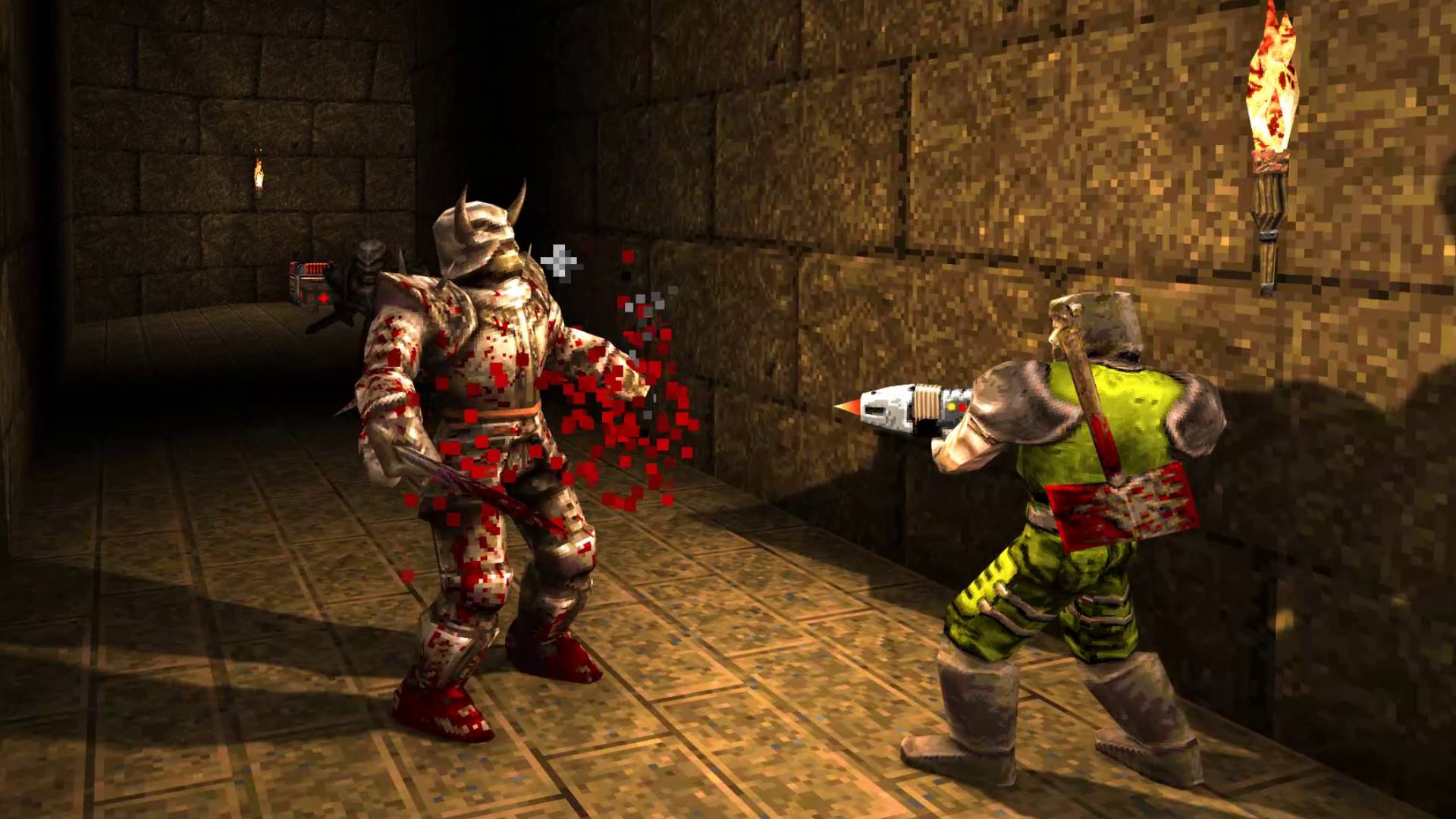
There was a time when, if you’d played the latest Wolfenstein campaign, you were completely up to date on what was happening at celebrated FPS studio MachineGames. But that’s no longer the case. For one thing, the developer is now quietly whipping up an Indiana Jones game – “a wholly original, standalone tale set at the height of the career of the famed adventurer”. For another, it’s been periodically putting out new episodes of Quake.
Yes, 1996 Quake. Or more specifically, the remastered version available on all digital storefronts, including PS5, Xbox Series X|S, Nintendo Switch and even Xbox Game Pass.
The first, Dimension of the Past, was made to celebrate two decades of the spiky, seminal shooter in 2016. And the second, Dimension of the Machine, was released just last year alongside Quake’s remaster. Which means, at this stage, MachineGames has already built half as many episodes as Bethesda stablemate id Software ever did. And that’s not counting the ones senior Wolfenstein level designer Christian Grawert made back when he was known as ‘czg’, a luminary of the Quake modding community.
I’ve been fighting my way through this long legacy over the past couple of days – progress doesn’t come easy in Quake, particularly if you’re not quickloading – and have emerged covered in gibs and admiration for MachineGames’ level design chops. As well as a better understanding of how the studio might tackle an Indy game. So to speak.
Deep dive
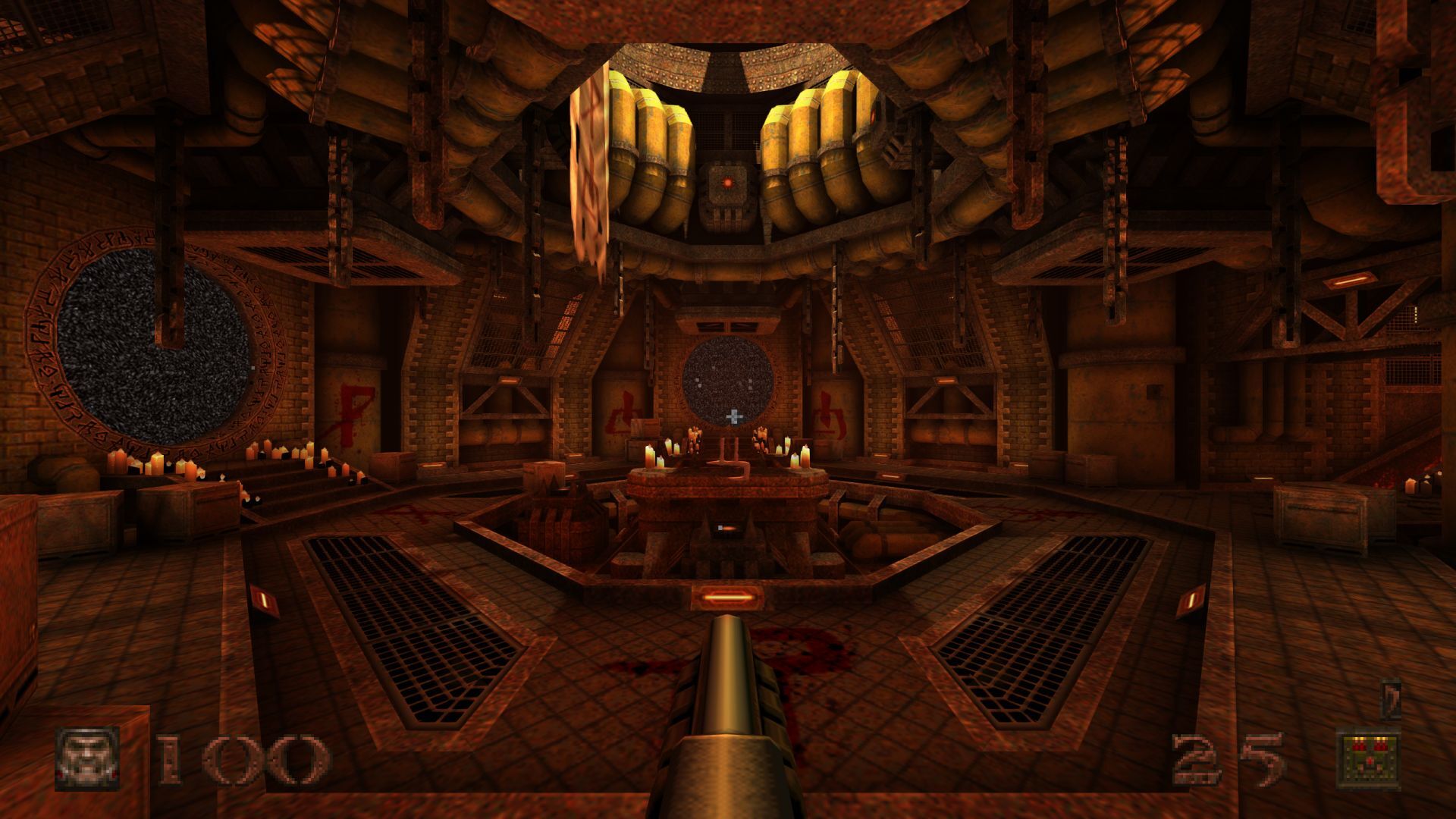
If there’s one thing MachineGames has shown over the years, it’s an ability to understand the assignment. This developer has proven uniquely adept at handling licenses – not just Wolfenstein, but Chronicles of Riddick and The Darkness, back when the core team worked at Starbreeze. And Quake is yet another skin that MachineGames knows exactly how to wear, without accidentally telefragging a classic.
Every level in the Dimension episodes subscribes to a set of level design rules that John Romero and id Software put in place back when Quake was initially developed. The first was that every room should defy the limitations of Doom II, id’s previous project. Since players could now look up and down for the first time – a laughably fundamental addition by the standards of modern FPS players – Quake levels were defined by ornate ceilings, vertical climbs, and underground lakes.
It’s a tradition that MachineGames leans into. Many of its levels feel like Metal Gear Solid-style infiltrations in which you emerge behind enemy lines, having swum some underwater gauntlet through dank canals or cave springs.
Get daily insight, inspiration and deals in your inbox
Sign up for breaking news, reviews, opinion, top tech deals, and more.
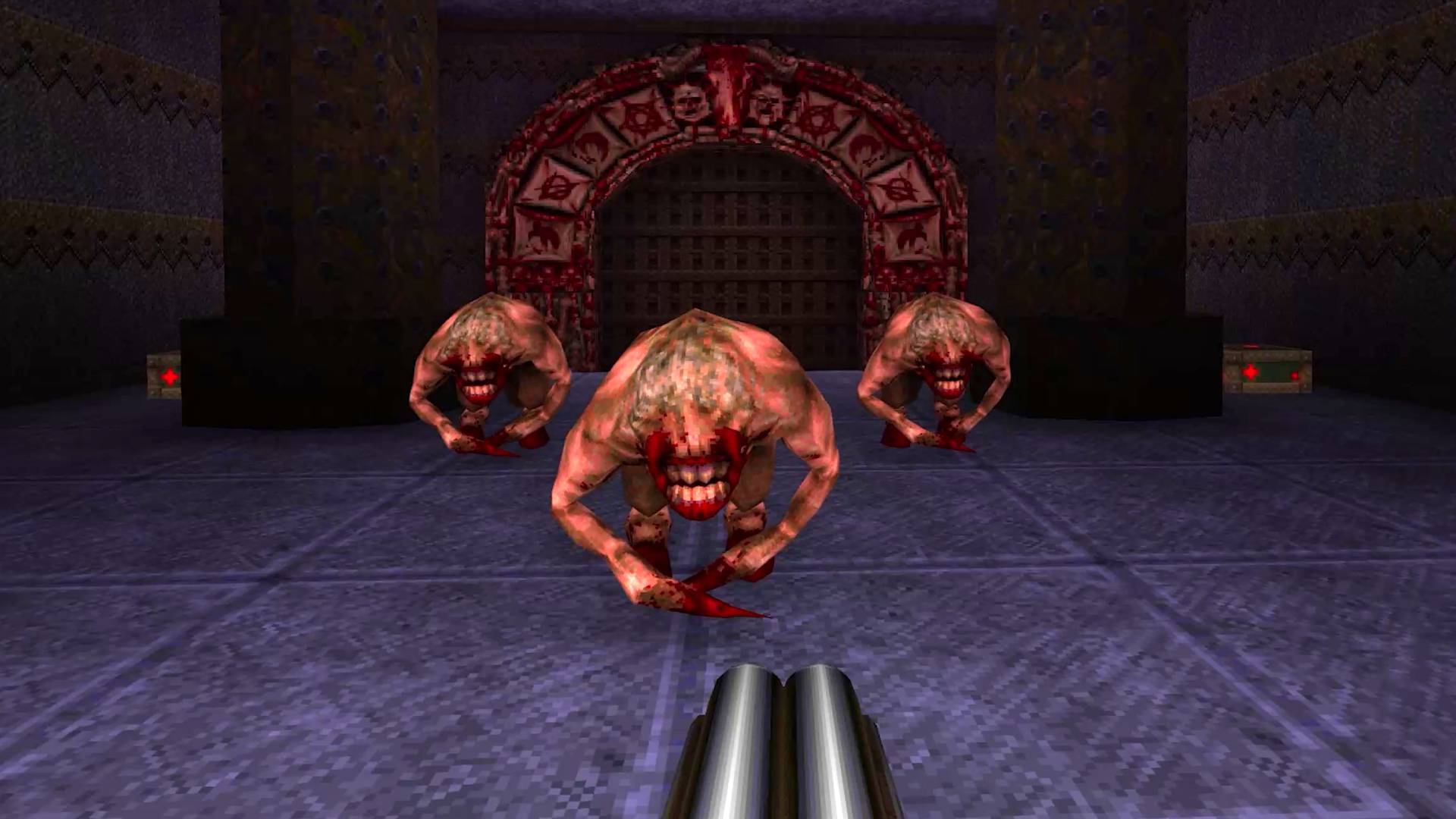
Even better, the Dimension campaigns embrace Romero’s fondness for hidden areas and “aspirational” views. Though the latter term may be unfamiliar, you’ll know the experience intimately – glimpsing a health kit behind the bars of a cage or through a gap in a wall, and knowing there’s a way to get there, if only you can find it. It’s a characteristic that ties into another of Romero’s laws – that players should revisit areas regularly. As they do, each level becomes a locale, grounded by routes that fold back in on themselves and offer new viewpoints on well-trodden areas (a trick that lives on in games like Dark Souls).
The best viewpoints in MachineGames’ episodes could rival any tourist stop. Dimension of the Past is one thing – a respectful throwback that largely sticks to the scuzzy beige-grey textures, angular shapes and medieval symmetry of the original. But in Dimension of the Machine, the developer lets loose, deploying a modern game dev’s understanding of lighting, framing, and minute detail.
The very first moments in its hub world are a true display of might; the backlit industrial grilles on the periphery bathing the belly of the machine in a crosshatch of shadow, while burning candles and dangling chains act as occult, dungeon-esque stalagmites and stalactites. Instant atmosphere, and of course, instant screenshot material.
Dimension it
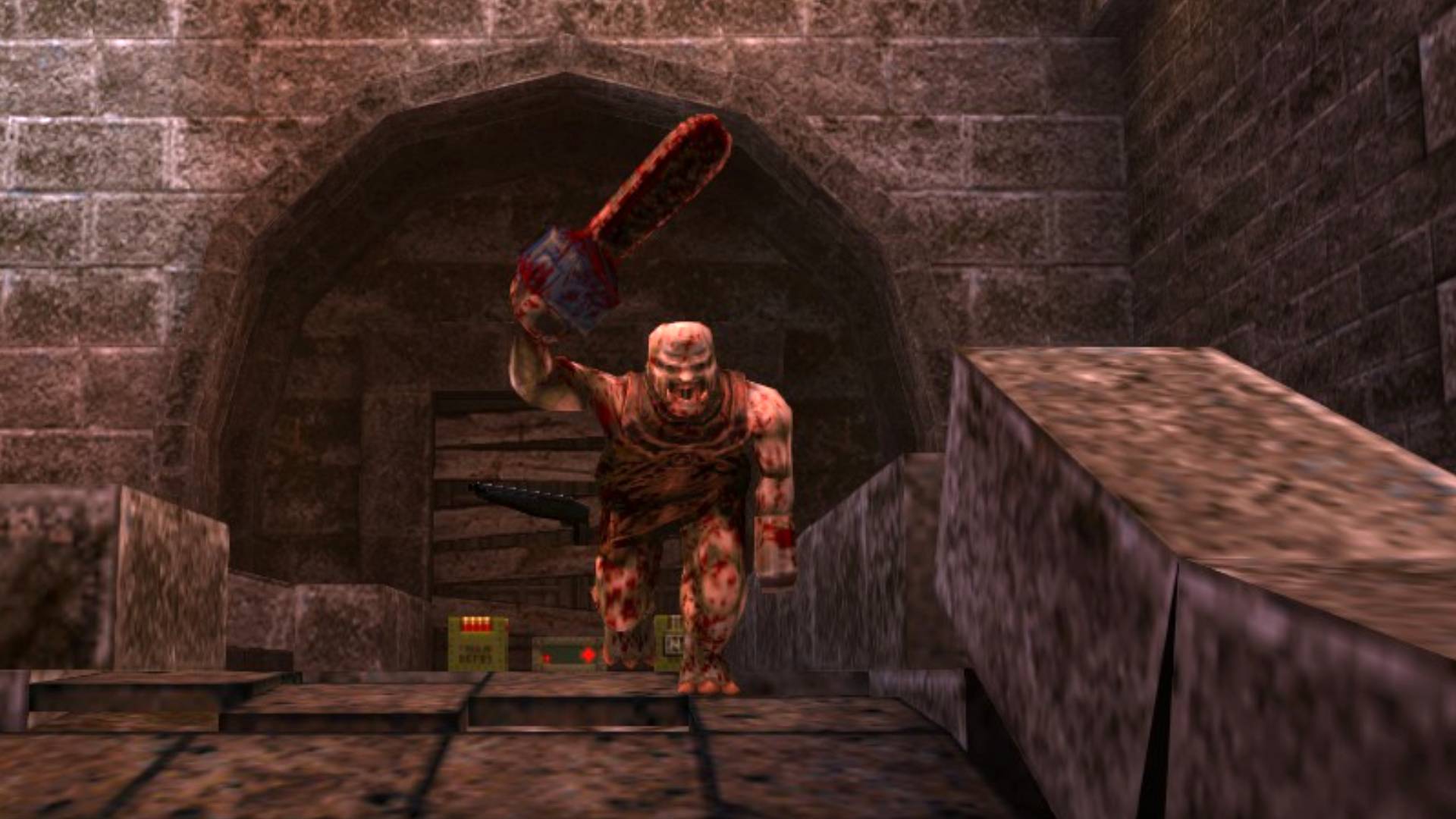
id Software demanded landmarks of Quake’s designers, and MachineGames delivers on that front too, twisting ancient geometry to new ends: a gaping, open-mouthed folly situated in a toxic swamp; a clifftop cathedral with a horned facade; a byzantine, windmill-powered factory that exudes pipes like Cthulhu does tentacles. And running through it all, in the form of tight corridors, mechanical lifts, and winding staircases, some of Quake’s purest and most efficiently wrought playspaces.
Where modern FPS developers can usually rely on crutches like cutscenes or mo-capped conversations to switch up pacing or stitch sequences together, there’s nowhere for a level designer to hide here. MachineGames passes the test with flying colors, not to mention the airborne body parts (grenade launching gets messy).
What leaves me most excited for the developer’s take on Indiana Jones, though, is its clear appreciation for and mastery of traps. MachineGames has stuffed both of its episodes with things that squash, pierce, and otherwise punish you for daring to enter castles and catacombs beyond your understanding.
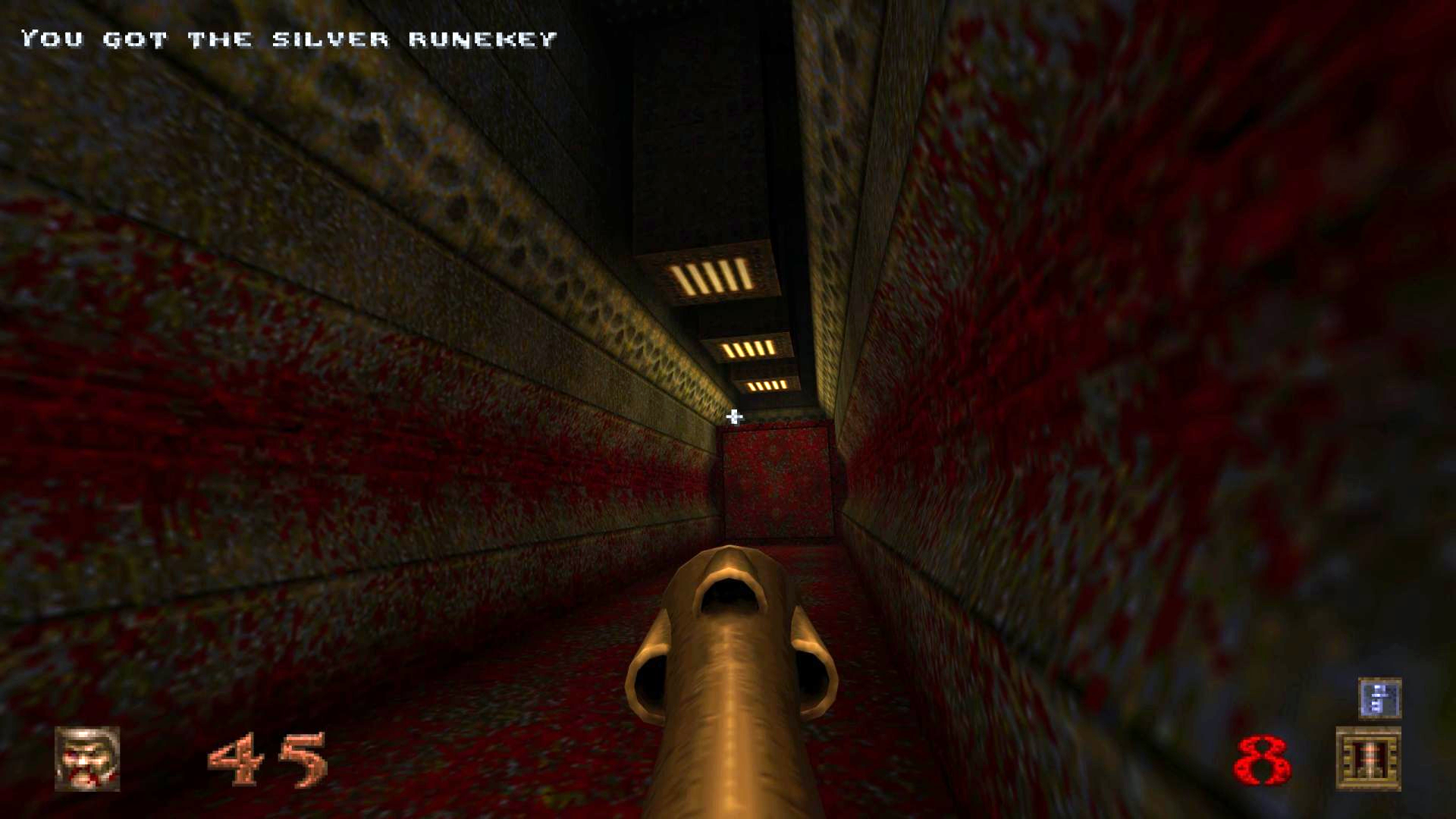
No wall or ceiling can be trusted to stay in its place. The former squeeze your flanks, while the latter descend to break your skull. In one sequence, a button drops you through a trapdoor into a long, blood-smeared corridor, bookended by rapidly encroaching spiked walls.
You’re given precious few seconds to figure out how to disrupt the machine and escape an instagibbing (though thankfully, such dilemmas are for the most part situated early in the levels, circumventing too much restart frustration). It is the stuff of Edgar Allen Poe’s most diabolical scribblings, and all the better for a tactile, concrete approach to trap building. Very often, it’s you who pushes at the mechanism that leads to your demise, or on a retry, a hair's-breadth survival.
When it comes to its new Indiana Jones game, I suspect MachineGames won’t simply mod a hat-grabbing key into Quake and call it a day. Yet the fundamentals on show in the Dimension episodes bode well – not just for this next game, but for anything else the developer tries its hand at. MachineGames has shown beyond doubt that, beneath the flash and flourishes of Wolfenstein, it has great bones – even while it’s crushing mine.

Jeremy is TRG's features editor. He has a decade’s experience across publications like GamesRadar, PC Gamer and Edge, and has been nominated for two games media awards. Jeremy was once told off by the director of Dishonored 2 for not having played Dishonored 2, an error he has since corrected.